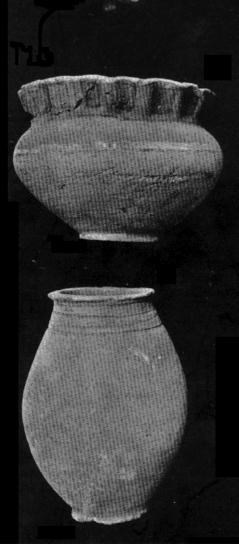
These two pottery vessels from the tomb of a rich woman puzzled the excavator, Reginald Engelbach, who commented that it was "quite new to me, and I have as yet been able to find no countertypes to give a clue as to their place of origin" (Engelbach 1923: 10).
At that time, it was only clear that the two vases belong to some group outside the usual repertoire of Middle Kingdom pottery made in Egypt. Prior to this in 1889, however, Petrie had found five fragments of a vase similar to the open form (top left) at the late Middle Kingdom (about 2025-1700 BC) town site near Lahun. This town is not far from Harageh and flourished during the period of Harageh cemeteries A and B. Archaeologists agree that the curious form and decoration of the Lahun pot have parallels in Bronze Age Greece, specifically in Crete, in the palace products known as Kamares ware. Engelbach recorded that the open Harageh vessel "is of light brownish pottery, smoother than the usual Egyptian types in this Dynasty, with the upper part red with black painted panels." Brown, red and black surfaces are typical of Kamares ware, apparently in imitation of more precious metal vessels.
A Minoan inspiration for at least the upper of these two vessels would fit with the limited evidence for import and copying of Kamares ware during the late Middle Kingdom (see Kemp/Merrillees 1980: 36-39, fig.17; for further reference, see Fitton/Hughes 1998: pl.4a on p.156).
click on the vessels to see the example in the Petrie Museum